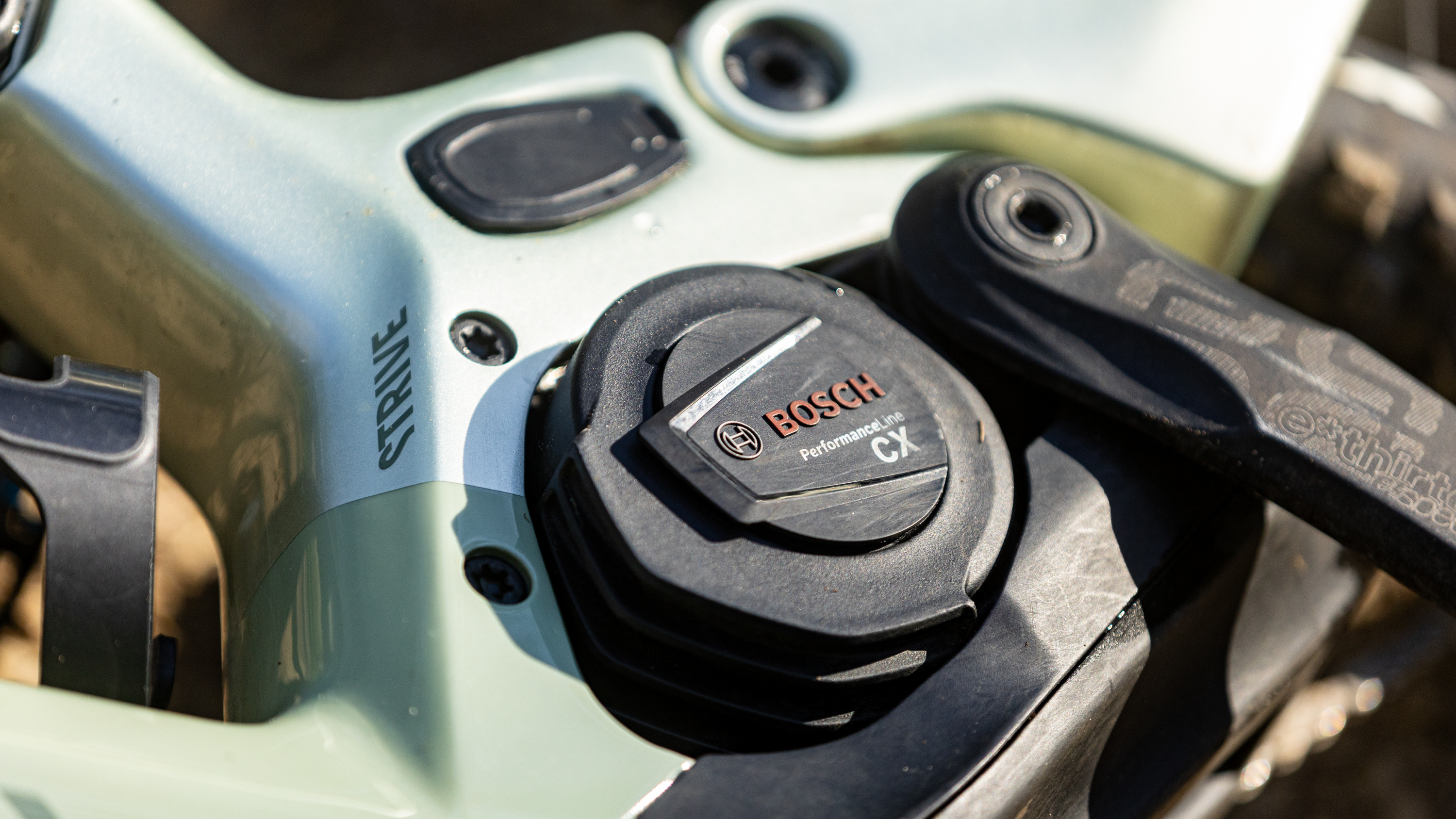
Over recent years, German brand Bosch has used its vast experience in consumer electronics and motorized tools to, erm, power into the e-bike motor segment. It’s built up an enviable reputation for some of the most punchy and reliable drive units you can buy and steadily improved less popular aspects like its clunky control units and displays. The Performance Line CX motor dates back to 2015, but the Gen 4 version I've been testing is the brand’s latest highly-refined, flagship, off-road system.
Going up against Bosch is a cycling component brand with a huge reputation for drivetrains that needs little introduction. Shimano has been manufacturing top-end, world-renowned, kit like Dura Ace and later XTR for over half a century and the Japanese brand was early into the e-bike motor game too. The familiar-looking EP801 here is its latest full-fat offering sharing the same form factor as its predecessor – the EP8. Don’t let that fool you though; the new model is a totally different beast to that less powerful and reliable motor.
Both CX and EP801 claim similar peak power and the same amount of torque, but both also feel different in the real world once tires hit dirt. I’ve recently clocked up loads of ride time on two of the best long-travel electric mountain bikes from Canyon – the brilliant Torque:ON and Strive:ON models (click the linked text for full reviews on both bikes) that each use rival models of the motors we're comparing here. Both are carbon-framed, gravity-focussed e-MTBs from the same design team and form a solid base to point out the strengths and weaknesses of each system. So Bosch Performance Line CX vs Shimano EP801 – which e-MTB motor is best?
1. Bosch CX vs Shimano EP801 overview
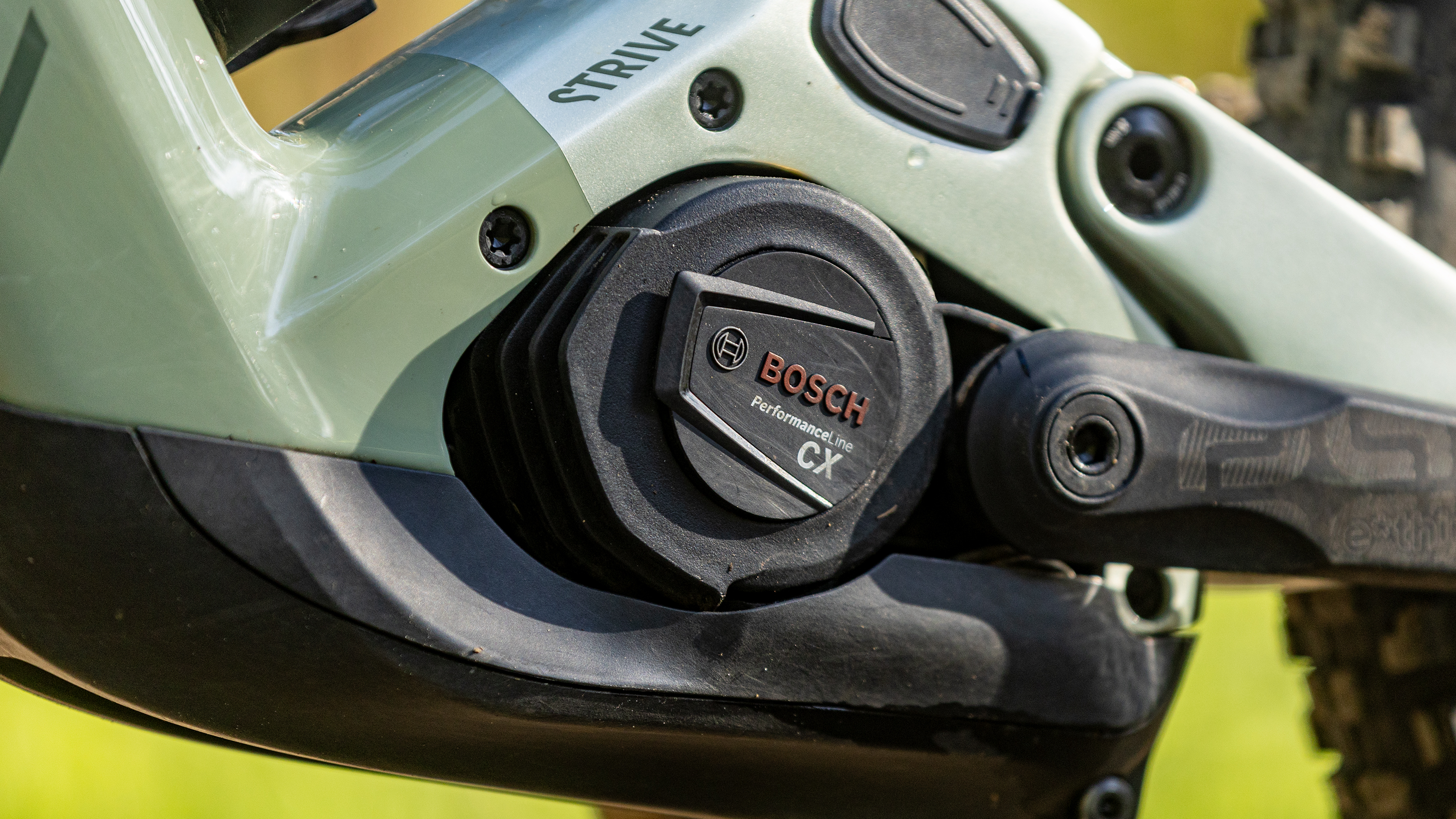
Bosch Performance Line CX
Pros
- Tons of power right the way through the cadence range
- Long overrun in Turbo mode aids cresting technical climbs
- eMTB mode offers a good balance of power and range
- Repairable outside warranty
Cons
- Long overrun makes wheelspins an issue
- Own brand Powertube batteries top out at 750Wh
- Powertubes are heavy for their energy density
- LED remote controller on alloy bikes is clunky
- Motor rattle while coasting on rough ground

Shimano EP801
Pros
- Natural and smooth ride feel
- Much more powerful than its EP801 predecessor
- Better sealing and heat management
- Very quiet while cruising along
- Third-party battery support for big capacity cells means a bigger range
Cons
- Clunk while coasting (noticeable on some bikes/motors and almost silent on others)
- Battery display increments are too vague and final bar can’t be trusted
- Can’t use previous generation batteries
- Unrepairable outside two-year warranty
2. Comparative motor specs
3. Battery and range
Both brands offer three battery capacities, although Shimano’s smallest one is only externally or rear carrier mounted. For most serious e-MTB riders, the 630Wh Shimano battery and the 625Wh or 750Wh Powertube will be the main options and how each battery is installed depends on bike brand’s individual set-up. Most full-fat bikes offer the ability to remove the cells for off-the-bike indoor charging and you’ll need this if you don’t have somewhere warmer to store and charge the bike as batteries don’t charge well/at all in the cold.

One quirk with EP801 is because the motor uses an all-new processor chip and CAN (controller area network) bus architecture, it’s not compatible with (identical looking) previous generation EP8 batteries. This means you need to be careful not to mix up batteries (like I did during a stage race) and it also renders old batteries obsolete if you update, replace or upgrade to the more powerful motor.
Outside of own-brand batteries, Shimano offers the serious advantage of allowing third-party manufacturers to provide power as well, something Canyon take full advantage of by offering its own 900Wh battery for both the Torque:On and shorter travel Spectral:ON models. Other brands like Merida also pack more cells into the same form factor as Shimano and up capacity to 750WH instead of 630Wh, and this aspect can be a useful tool to add value for manufacturers.
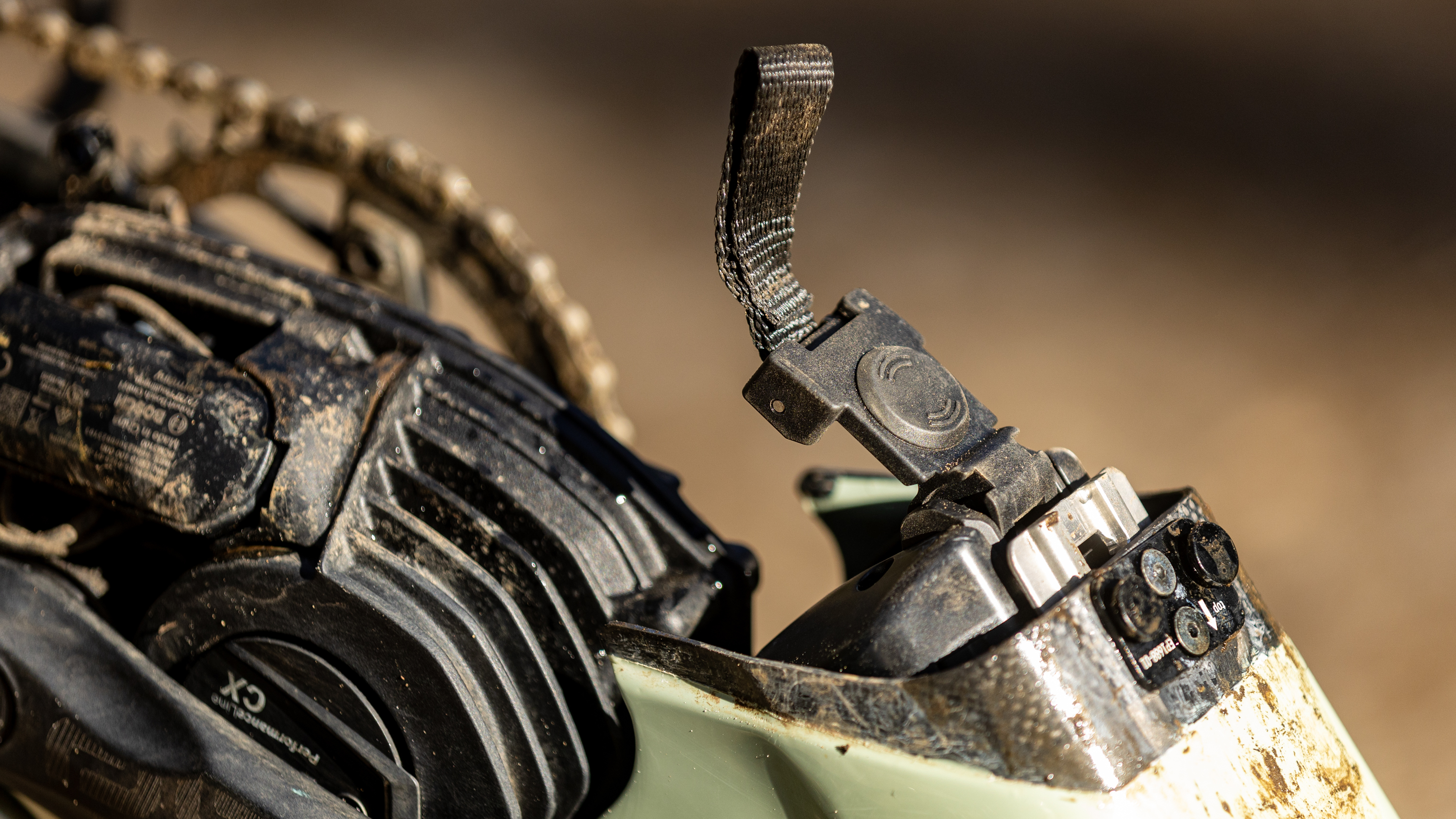
I managed huge ride times and huge climbing stats on Canyon’s 900Wh battery on the Torque:ON that far exceed what Bosch’s 750Wh can manage on any bike. This is a massive bonus if you want to ride large distances in remote terrain or simply smash out more laps.
Bosch’s and Shimano’s batteries are pretty similar for the amount of power stored compared to many e-bike rivals – the 750Wh Powertube weighs 4.38kg so packs 171Wh/kg, while Shimano’s 630WH battery is 3.7kg and offers 170Wh/kg.
This is what the stats say, and while I’ve not measured it accurately, my hunch from multiple rides and repeated experience riding around the Ard Rock Enduro course on various e-bikes is that a 630Wh Shimano battery will get you a bit further than the extra 5Wh might suggest – compared to Bosch’s similar 625Wh option.
4. Display, app and controls
Both brands have a multitude of displays and controllers for their e-bike systems but only a couple are really suitable for off-road riding.
Bosch’s top tube-mounted System Controller and bar-mounted Mini Controller (which Canyon uses for the Strive:On) is the brand’s slickest MTB solution. It uses a nice, rubber-protected display with five bars to represent the remaining charge between your legs (two colors within each power bar means 10 percent increments) and there’s the option to cycle through modes, or at a very neat and tidy push button controller next to the left grip.
This wireless Mini Controller doesn’t have any complicated cables cluttering up the bar and is also easy to reach while riding or hold to activate the well-positioned walk mode. Bosch also keeps the Strive:On’s rear stays tidy by using a wireless speed sensor on the rear wheel at the valve stem that negates the need for magnets on spokes or brake rotors.

If your frame is aluminum (or the bike brand doesn’t integrate the controller into the frame), you need to use at least Bosch’s LED remote to talk to the motor. This can be found on the Whyte E-160 I tested recently, and it’s much clunkier, can get damaged if you turn the bike upside for a trailside repair and is also in pole position to get smashed in a crash.
Bosch’s bar or stem-mounted Kiox displays are even more cumbersome and ripe for trail damage, but some riders will still want them to drill into stats and use for navigation while riding. Bosch’s system does a good job with maps and routes, whereas Shimano requires downloading a separate e-bike ride app to do navigation on top of the app that controls specific motor settings.
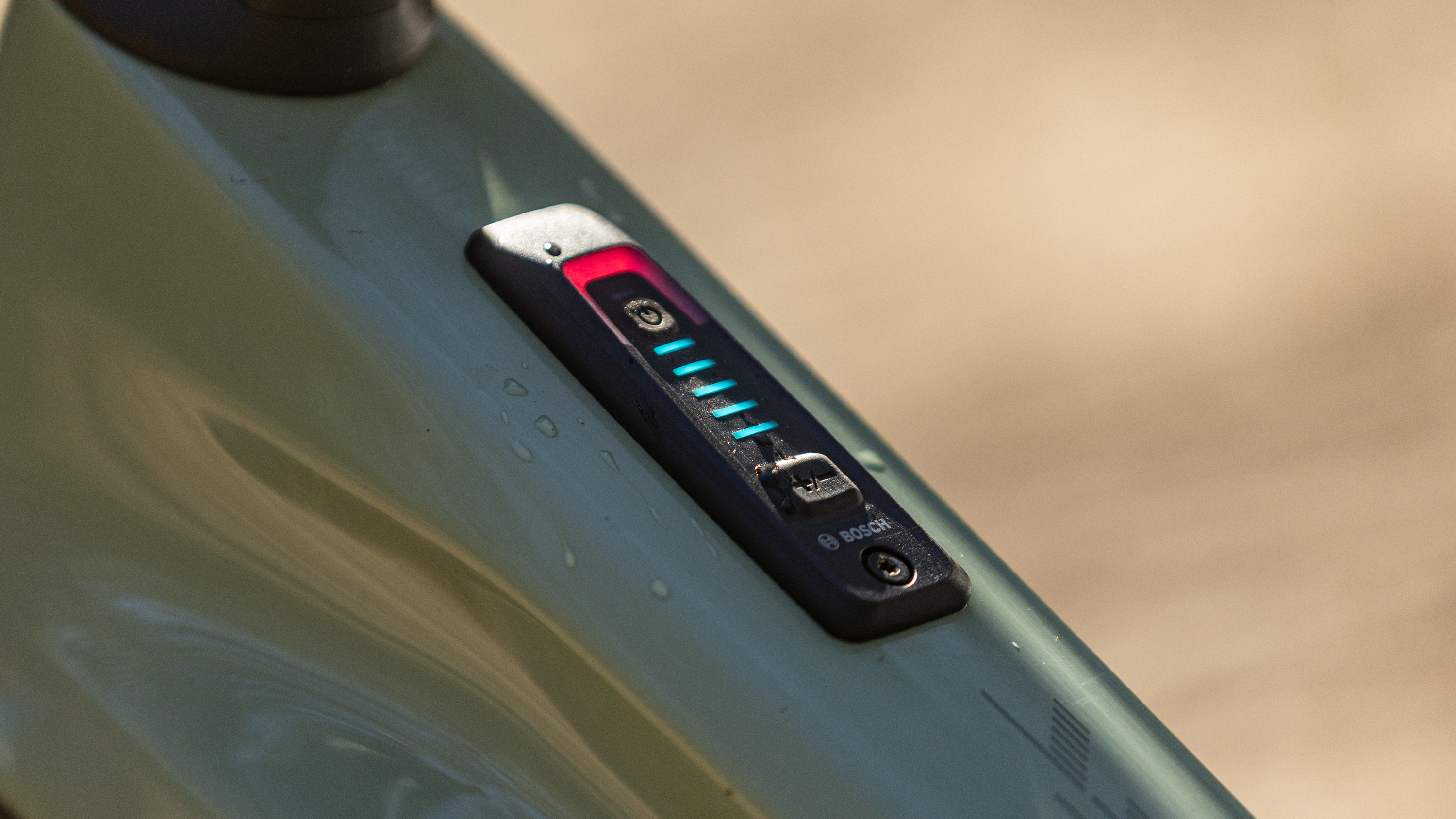
Shimano has long had one of the cleanest handlebar displays that provides all the information you’ll likely need in a really discreet form factor. Called STEPS E8000 and found on the Torque:ON, it can cycle through modes and display different windows like speed, distance, cadence and remaining range etc. With Bosch, you need the bigger Kiox display (or your phone) to see all this stuff. E8000 is basically like a little bike computer that doesn’t get in the way and can also store a couple of preset power templates to scroll through motor settings you set on the E-Tube app (Bosch’s CX can store four rider presets).

I’m a fan of Shimano’s display to check the remaining range for example, but even as small as it is, you can ditch it for a cleaner bar set up and just use the EM800 switch unit buttons to cycle between modes.
One big annoyance with Shimano’s display is it only shows battery life in 20 percent increments compared to Bosch’s 10 percent – and even finer battery percentages elsewhere. This would be a poor level of detail even if it was accurate, but what usually happens is once the power goes down to one bar is anyone’s guess – but the battery life remaining in that last bar definitely doesn’t last as long as the first four.
This is presumably due to the battery preserving some juice to power a light or Di2 kit, but it’s far worse and less predictable on every Shimano bike compared to every Bosch bike I’ve tested. Basically, you better be near the car park or your house running low on power on EP801 or you’ll have a long pedal on a heavy e-bike with no motor. Shimano really needs to swap these increments for a percentage as the remaining range on the display is also wildly inaccurate and always overestimates how much range is really left.
Both brands offer pretty easy to use apps that can do a wide range of tuning and tweaking in each mode. Shimano’s app can be very slow to connect, but you can make a real difference to the amount of punch and drive at the cranks by dialing up assistance and pushing the sliders all the way to the right. Whereas Bosch’s factory Turbo setting appears to give deliver a lot of torque and responsiveness right from the off.
5. Real-world performance
Let’s get some assumptions out of the way first. Bosch CX is known for being quieter than Shimano and if you listen to the forum chatter, it also absolutely trounces Shimano for sheer power. My experience doesn’t tally with this, and, boosting Shimano in the app (rather than requiring any dealer or manufacturer-level tweaking) can make a real difference so that real-world help actually feels remarkably similar.
Whether each motor rattles or clunks is also a bit of a lottery, regardless of brand. While the Whyte E-160 mentioned earlier was almost silent, the Strive:ON’s internal CX rattle is more pronounced and louder when descending than the barely audible clatter on the Torque:ON’s EP801.
I found Shimano’s motor is actually nearly silent when coasting unless there is a specific type of surface that vibrates it rather than an occasional sharp hit. And, in terms of motor whine, both are very similar too – Shimano’s motor is definitely quieter if you are just cruising along in Eco on the flat, but at full gas in Boost mode, it is perhaps marginally louder than CX.
Performance Line CX has a reputation for reaching peak power at lower cadences and with relatively little leg power input. This allows even unfit riders to reach the motor’s maximum assistance without too much effort while pedaling seated. Many worn-out smaller cassette cogs on Bosch bikes are a testament to CX’s ability to drag the rider along and, until recently, this was one of the most obvious advantages over EP8.
I reckon EP801 is now very close in terms of max assistance (at my 85kg weight at least) right up to about 80rpm, which is where most riders will top out before pedaling feels very unnatural. Using the Shimano display to measure cadence, I found EP801 able to more or less keep up with Bosch while riding up steep fireroads with a pal who is within a kg or two of my weight. One other statistic to back up how much pokier the new EP801 is than before is Yeti rider, Ryan Gilchrist, winning a couple of uphill EDR-E power stages last season – which is the first time Shimano has won one on the world stage since e-bike enduro racing began.
Bosch’s power doesn’t need any reiterating and is always there itching to go (especially in Turbo), easy to access and does seem to have an advantage the faster you spin cranks. It’s simply not practical to spin much more than 90rpm or so on an MTB though because the suspension and chassis starts to bob so much you lose any power advantage (which kind of debunks Bosch’s claims about its latest lightweight SX motor, but that’s another story). I’m also far too old to be spinning over 100rpm off-road and looking like some kind of hamster on a wheel.
So, while you can possibly feel the Bosch power advantage when spinning fast twiddles up the steepest little sections to crest rooty or rocky climbs, this also might be a consequence of having slightly more overrun that keeps the bike flowing better – particularly in Turbo mode.
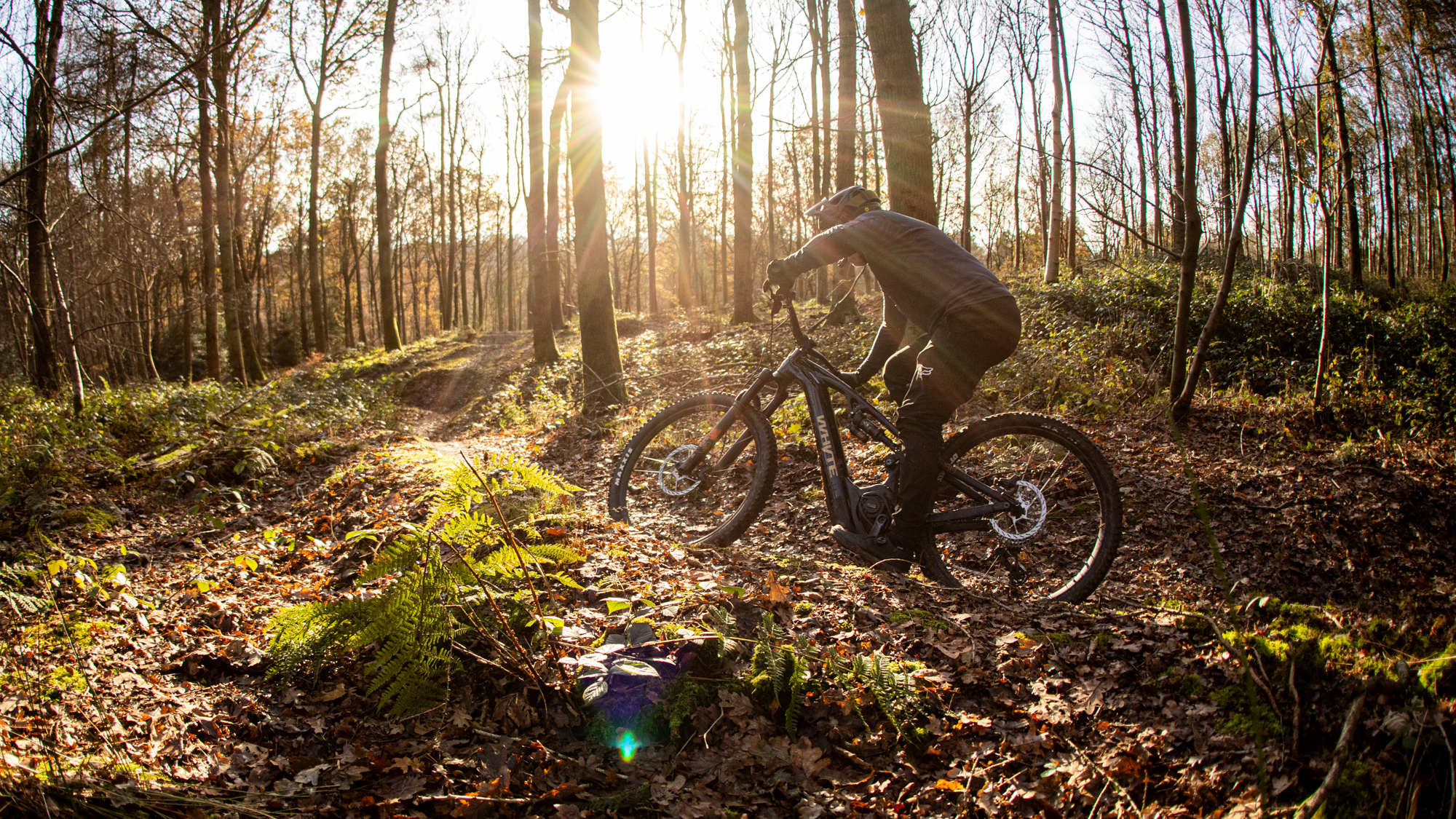
The EP801 does a far better job than the previous version in smoothing out choppy uneven pedaling, and there is just the right amount of overrun in Boost mode without losing the character of a very smooth and natural power delivery that feels like it matches what you put in yourself. Both motors are sensitive enough that it’s easy to modulate power even in the highest support modes, although Bosch’s CX can feel a little edgier in Turbo mode when power response first kicks in.
Two of the modes you might use the most, Shimano’s Trail and Bosch’s eMTB, have a different feel: Trail is more like a lower-powered smooth Boost mode, whereas eMTB feels much more responsive to matching rider inputs and giving you a real boost if you pedal hard and fast. The latter works brilliantly, saves battery and feels like it mirrors what you are doing really well, but can feel a tiny bit stop-start with power pulses on muddy technical climbs where traction comes and goes and cadence keeps changing.
In terms of motor friction and resistance, it’s hard to say which motor is best when the battery has died or turned off. The two Canyon bikes I back-to-backed have a different amount of travel and are also a different weight; neither has a terrible amount of noticeable drag when pedaling along once over the speed limit, but I reckon EP801 has marginally less resistance when pedaling with the bike switched off.
Finally, looking at walk modes – both do a good job and both are easy to reach and press. You can help control the bike’s speed and amount of pull by changing gear on the rear cassette on both, but if I was to pick a winner, I think the Shimano walk mode might be slightly quicker to turn on and smoother.
6. Reliability, future and waterproofing
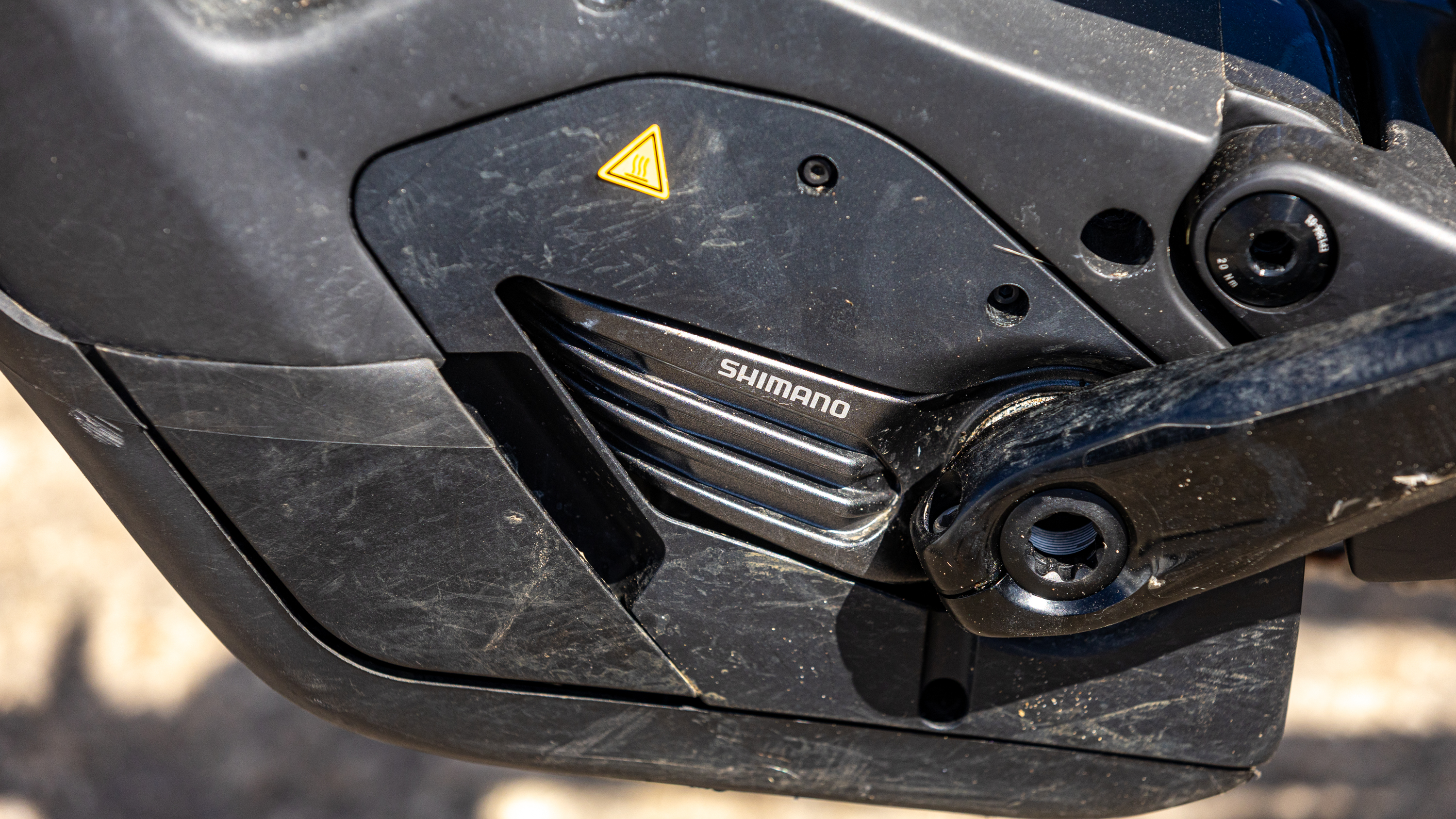
While newer generation motors are smaller and lighter, the flipside is that internal bearing and component size can diminish, in turn lowering overall robustness. Shimano has flipped this script to some extent though as (so far at any rate) the EP801 is proving way more reliable in the wet UK climate where drive units get doused in water and slop most of the year. Reliability and sealing is way better and clearly visible in rubber-sealed cables, wiring and switches, and the magnesium casing also has improved heat management over the EP8. According to a couple of brands I’ve spoken to off the record about warranty issues, this is making a real difference in motors coming back for replacement too.
Bosch doesn’t need to prove anything though, as it has the best reputation for reliability in the e-MTB game and Shimano is still playing catch up in this regard and only time will tell.
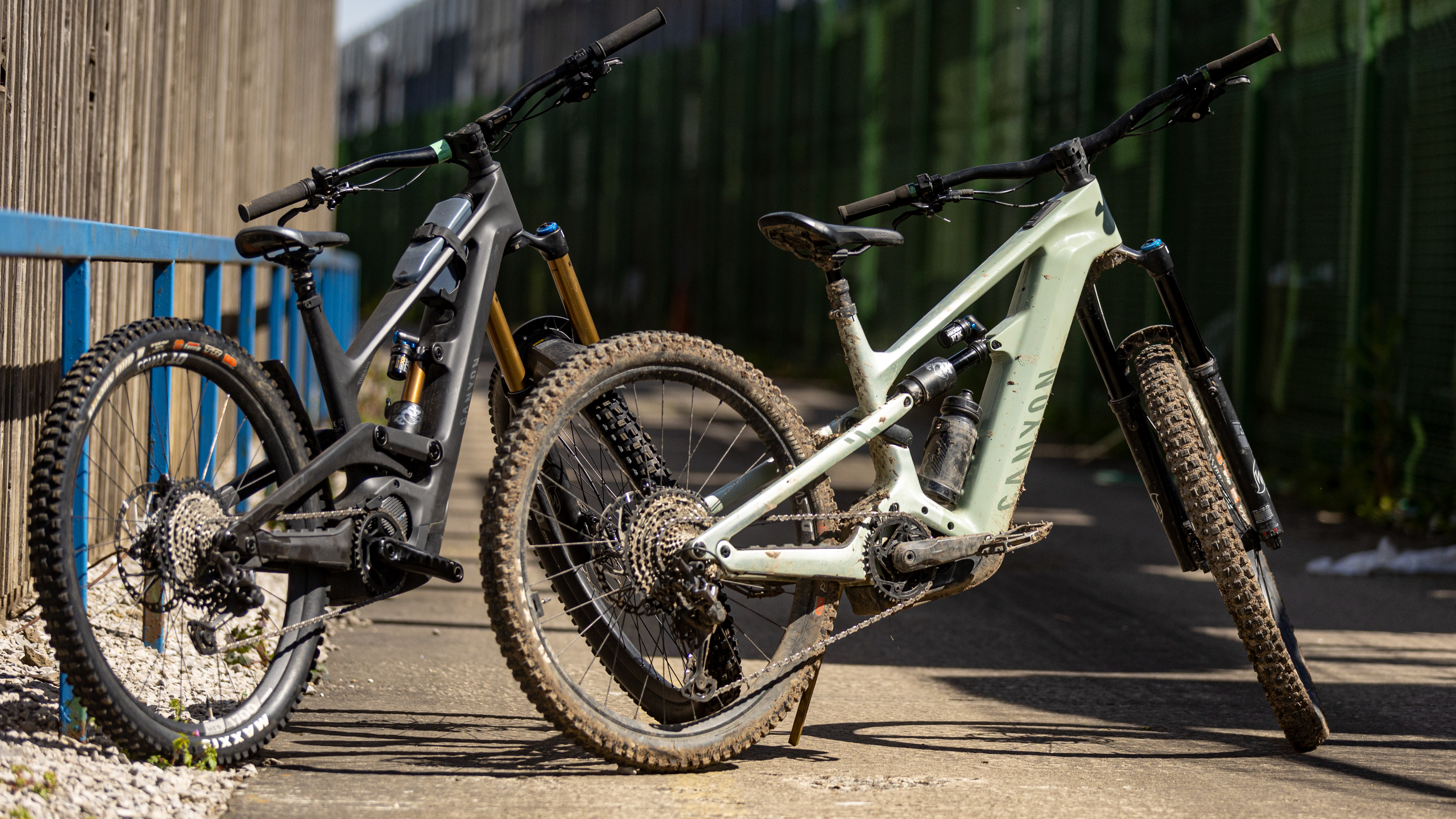
Another consideration is Shimano’s 'no repair' policy means once you are outside the two-year warranty window you’ll be stumping out full money for a replacement motor (currently about $900 / £900). The Bosch motor, on the other hand, can be repaired in many places with genuine replacement parts available and fixes starting at a couple of hundred bucks/quid. This is a major advantage to long-term ownership although one or two places are popping up that offer to tinker with Shimano motors too.
Shimano has been tarnished by its old reputation on reliability, noise and grunt, but the EP801 is superior in every way – including the most noticeable one of power at all cadences in the real world. The brand should have done itself a favor and renamed this 20 percent more powerful motor EP9 or something as it really is that different.
Bosch’s CX simply gets on with it though and you can’t argue with the brand's proven power and reputation for reliability. Another big deal is what might happen when your two-year warranty runs out and how much harder it is to repair a Shimano motor. Yes. I’ve have seen first-hand many issues amongst friends where Shimano has replaced older motors for free and sometimes without any installation and fitting costs, but Bosch’s motor can be serviced and repaired at a growing number of e-motor specialists for a reasonable price – which is a major benefit.
7. Overall verdict
If asked 18 months ago about Bosch vs Shimano, I’d have answered Bosch in a heartbeat, but Shimano’s latest EP801 has totally shifted the goalposts.
If you believe everything you read elsewhere, EP801 is still an outdated, clunky and noisy inferior product, but on the evidence here, I don’t think that’s fair. It’s certainly good enough that it shouldn’t inform buying decisions if everything else about a bike is right.
To answer the overall question of which motor is better, I think Bosch’s Performance CX system still edges it as a package, especially if you are limited by each brand’s own battery options. Basically, I’d take Bosch’s power, motor feel and it’s 750Wh battery over Shimano’s 630Wh any day of the week.
But once you factor in larger battery options like Canyon’s 900Wh beast on the Torque:ON, it’s a no-brainer to go with EP801 if you want to do the biggest rides or just play out for longer. I didn’t feel any noticeable impact on ride quality or enjoyment with the long and heavy battery inside the Torque:ON, but not all bikes will wear the weight so well. That means it's always going to come down the bike’s individual merits as much as any motor. On aluminum bikes where Bosch’s controller unit can’t be built into the frame, Shimano’s bar-mounted display is also much cleaner, simpler and harder to damage than Kiox displays.
Both systems have advantages over each another, so which one you choose will ultimately depend on what you want. Overall though, both the latest Bosch and Shimano motors are excellent.







